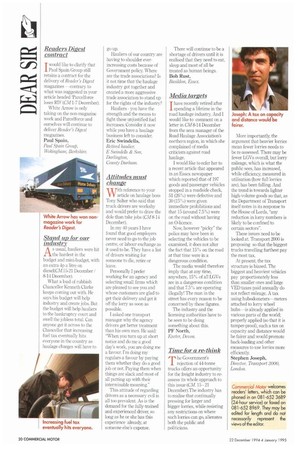Time for a re-think
Page 22

If you've noticed an error in this article please click here to report it so we can fix it.
The Government's rejection of 44-tonne trucks offers an opportunity for the freight industry to reassess its whole approach to this issue (CM. 15 21 December).The industry has to realise that continually pressing for larger and bigger lorries, while resisting any restrictions on where such lorries can go, alienates both the public and politicians.
More importantly, the argument that heavier lorries mean fewer lorries needs to be re-assessed. There may be fewer LGITs overall, but lorry mileage, which is what the public sees, has increased, while efficiency, measured in utilisation (how full lorries are), has been falling. And the trend is towards lighter high-volume goods so that, as the Department of Transport itself notes in its response to the House of Lords, "any reduction in lorry numbers is likely to be confined to certain sectors".
These issues need to be looked at. Transport 2000 is proposing so that the biggest trucks travelling furthest pay the most tax.
At present, the tax structure is biased. The biggest and heaviest vehicles pay proportionately less than smaller ones and large \TED taxes paid annually do not reflect mileage. A tax using hubodometers—meters attached to lorry wheel hubs—is already applied in various parts of the world; properly applied (so that it is tamper-proof), such a tax on capacity and distance would be fairer and would promote back-loading and other measures to use lorries more efficiently.
Stephen Joseph, Director, Transport 2000, London.
Commercial Motor welcomes readers' letters, which can be phoned in on 081-652 3689 (24-hour service) or faxed on 081-652 8969. They may be edited for length and do not necessarily represent the views of the editor.




















































































































